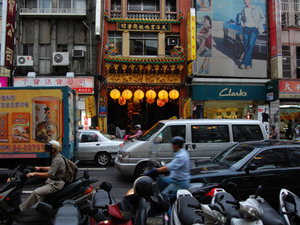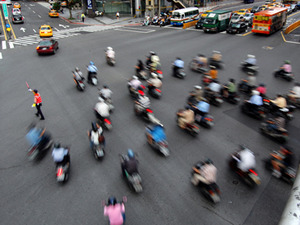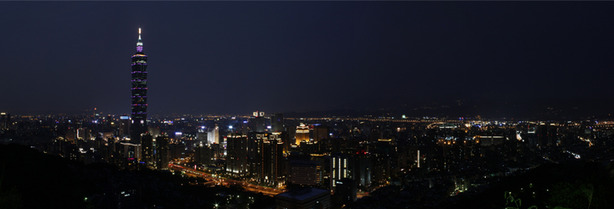A Brief Introduction to Taiwan
If you were checking the site much last week, you probably noticed the flood of news stories from Computex, the massive hardware industry tradeshow which takes place every year in Taipei, the capital city of Taiwan.Computex is always an interesting and intense experience. In part that’s because you travel 6,089 miles into a time zone seven hours ahead of London to meet, over the course of just a few days, many key people, from motherboard BIOS engineers to senior managers, to learn about what new products are on the way, and what’s happening behind the scenes.
In part it’s also because Taiwan itself is something of a mystery – one of the least visited destinations in the Far East, it’s a country few people can probably place on the map, or tell you much about.
Despite its anonymity, odds are Taiwan is where your GeForce, Radeon and motherboard were born. This little island, not much bigger than Belgium, is home to many of the companies that design the core components of the world’s computers. Even those big exceptions to the rule, American-based firms such as Nvidia and ATI, make many of their chips in Taiwan’s general purpose fabs.
How Taiwan came to be in this position is a story linked to its unique (non) position in the world, and its restless relationship with China. So, first question, is Taiwan a country? Well, the answer to that is it depends who you ask. In most normal senses, the answer is "yes of course": after all, it has its own currency, army and elected government, but thanks to pressure from China, it has no UN representation, and even its Olympics team competes under the name ‘Chinese Taipei’, because ‘Taiwan’ isn’t an international recognised term.
It is, in the words of the Daily Telegraph’s China correspondent Richard Spencer, “the most important country to not exist.”
Taipei by night, from one of the mountains near the city. The Taipei 101 skyscraper - the world's tallest - dominates the city skyline.
A little bit of politics
To find out how Taiwan ended up like this you need to go back to World War 2. In 1949, after losing a civil war against Chairman Mao and the Communists, their foes, the Chinese nationalists – known as the Kuomintang (KMT for short) – fled to Taiwan. The Communists then busied themselves fighting each other and launching horrors such as the Cultural Revolution, so despite their threats, they never pursued the KMT, leaving its leader, Chiang Kai-Shek, free to rule Taiwan as a dictatorship until he died in 1975. In the time honoured tradition of dictators, Chiang’s son succeeded him, but he turned convention on its head by gradually liberalising Taiwan’s political systems. By 1996, the President of Taiwan was an elected position, making Taiwan a real Chinese democracy.The mainland Chinese government maintains that there’s ‘One China’, of which Taiwan is a part, and it’s pressure from the Chinese which denies Taiwan a full role on the international stage. The Chinese have softened their tone in recent years, as have the Taiwanese, but it’s still generally understand by ‘One China’ that they mean the People’s Republic of China (PRC), ruled over by the Communist Party. The One China policy is a complex idea, because some Taiwanese also subscribe to it – although they dispute that it entails a Communist China – while other Taiwanese stress the island is a country that’s now distinct from the mainland.


Left: a temple fits snuggly between shops. Right: Everyone loves scooters in Taipei. Apart from this traffic policeman.

MSI MPG Velox 100R Chassis Review
October 14 2021 | 15:04










Want to comment? Please log in.